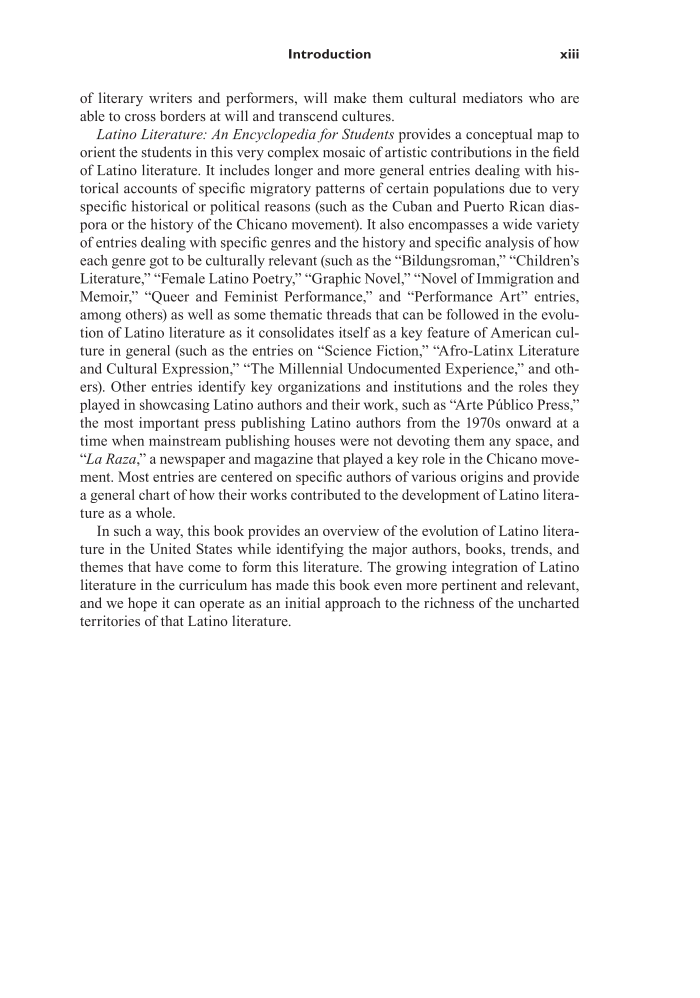Introduction xiii of literary writers and performers, will make them cultural mediators who are able to cross borders at will and transcend cultures. Latino Literature: An Encyclopedia for Students provides a conceptual map to orient the students in this very complex mosaic of artistic contributions in the field of Latino literature. It includes longer and more general entries dealing with his- torical accounts of specific migratory patterns of certain populations due to very specific historical or political reasons (such as the Cuban and Puerto Rican dias- pora or the history of the Chicano movement). It also encompasses a wide variety of entries dealing with specific genres and the history and specific analysis of how each genre got to be culturally relevant (such as the “Bildungsroman,” “Children’s Literature,” “Female Latino Poetry,” “Graphic Novel,” “Novel of Immigration and Memoir,” “Queer and Feminist Performance,” and “Performance Art” entries, among others) as well as some thematic threads that can be followed in the evolu- tion of Latino literature as it consolidates itself as a key feature of American cul- ture in general (such as the entries on “Science Fiction,” “Afro-Latinx Literature and Cultural Expression,” “The Millennial Undocumented Experience,” and oth- ers). Other entries identify key organizations and institutions and the roles they played in showcasing Latino authors and their work, such as “Arte Público Press,” the most important press publishing Latino authors from the 1970s onward at a time when mainstream publishing houses were not devoting them any space, and “La Raza,” a newspaper and magazine that played a key role in the Chicano move- ment. Most entries are centered on specific authors of various origins and provide a general chart of how their works contributed to the development of Latino litera- ture as a whole. In such a way, this book provides an overview of the evolution of Latino litera- ture in the United States while identifying the major authors, books, trends, and themes that have come to form this literature. The growing integration of Latino literature in the curriculum has made this book even more pertinent and relevant, and we hope it can operate as an initial approach to the richness of the uncharted territories of that Latino literature.
Document Details My Account Print multiple pages
Print
You have printed 0 times in the last 24 hours.
Your print count will reset on at .
You may print 0 more time(s) before then.
You may print a maximum of 0 pages at a time.








































































































































































































































































































































